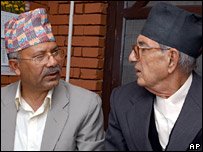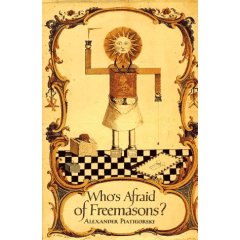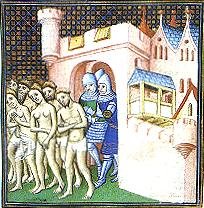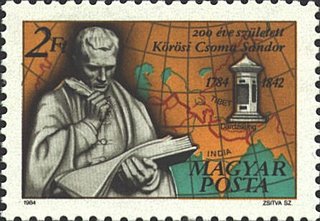










A fellow traveller once wrote: Or, walking the same or different Paths the moon follows each... Here you will find some journeys longitudinally between the Indian subcontinent and the Tibetan plateau, and latitudinally between southern France and the Rocky Mountains. These days I am writing from under the moon in the east village.
 Yet another late-breaking story from Kathmandu: Darren Attains Rainbow Body at Boudanath Stupa in Nepal.
Yet another late-breaking story from Kathmandu: Darren Attains Rainbow Body at Boudanath Stupa in Nepal. 


 "Taoist philosophy?" Pooh interrupted, lifting his head from a jar of honey, licking his lips and now taking an interest. "Didn't we write a book about that once?"
"Taoist philosophy?" Pooh interrupted, lifting his head from a jar of honey, licking his lips and now taking an interest. "Didn't we write a book about that once?" 
 "So is revolution about finding your way?" Piglet once again enquired; although he was still not sure he knew exactly what a revolution was and therefore was no closer to the answer to his original question.
"So is revolution about finding your way?" Piglet once again enquired; although he was still not sure he knew exactly what a revolution was and therefore was no closer to the answer to his original question. 


 Christopher Robin paused for breath, by now even Rabbit and Owl looked a little lost. "In recent months both the Maoist and the democratic parties have been carrying out an increasing number of activities to disrupt daily life and unsettle the current regime, in the form of strikes, protests, road blockades and in the case of the Maoist more brutal and concentrated violence. This has culminated in the mass protests, violence and disruption of the last few weeks, which has seen both groups join together and mobilise a significant number of people onto the streets, bring the country to a stand still and demanding a change of regime and a new constitution in Nepal – the start of a revolution."
Christopher Robin paused for breath, by now even Rabbit and Owl looked a little lost. "In recent months both the Maoist and the democratic parties have been carrying out an increasing number of activities to disrupt daily life and unsettle the current regime, in the form of strikes, protests, road blockades and in the case of the Maoist more brutal and concentrated violence. This has culminated in the mass protests, violence and disruption of the last few weeks, which has seen both groups join together and mobilise a significant number of people onto the streets, bring the country to a stand still and demanding a change of regime and a new constitution in Nepal – the start of a revolution." 



 I recently heard of a Latvian film entitled 'A Philosopher has Escaped' which received top award at an International Film Festival...well, the festival was in the Russian outpost Anapa... but still, the documentary film, "Filozofs Izbedzis" (A Philosopher has Escaped) from the "Lokomotive" film studio and directed by Uldis Tirons, was awarded first prize in the CIS and Baltic Film Festival.
I recently heard of a Latvian film entitled 'A Philosopher has Escaped' which received top award at an International Film Festival...well, the festival was in the Russian outpost Anapa... but still, the documentary film, "Filozofs Izbedzis" (A Philosopher has Escaped) from the "Lokomotive" film studio and directed by Uldis Tirons, was awarded first prize in the CIS and Baltic Film Festival. In the eighteenth century, Freemasonry was seen to be a force of enlightenment, yet it has come to be regarded as a sinister influence in public life. This definitive study reveals more about Masonry and the way it functions than any other work. Professor Piatigorsky considers the institution from the points of view of both Masons and their critics. In the first section, he gives an outline of Masonic history, from the foundation of the Grand Lodge in London's Covent Garden in 1717, through the extraordinary role of Masonry in Enlightenment Europe and the American Revolution, to the present day. In the second part, he describes Freemasonry's rituals and symbolism, within which all Masonic religious ideas find their place. It is here that Piatigorsky's wide knowledge of the world's religions comes into its own.
In the eighteenth century, Freemasonry was seen to be a force of enlightenment, yet it has come to be regarded as a sinister influence in public life. This definitive study reveals more about Masonry and the way it functions than any other work. Professor Piatigorsky considers the institution from the points of view of both Masons and their critics. In the first section, he gives an outline of Masonic history, from the foundation of the Grand Lodge in London's Covent Garden in 1717, through the extraordinary role of Masonry in Enlightenment Europe and the American Revolution, to the present day. In the second part, he describes Freemasonry's rituals and symbolism, within which all Masonic religious ideas find their place. It is here that Piatigorsky's wide knowledge of the world's religions comes into its own.

 If you thought that this (see second photo) look-a-like is the real Flavor Flav these days livin' it up in Beverly Hills, think again Holmes, it's all part of that surreal thing they have going on in Hollywood. But here is the real story: the lovely lady with the green hat and matching purse and fuzzy robust top, that is actually Private Eye Joe Wagner on another assignment. Stay tuned.
If you thought that this (see second photo) look-a-like is the real Flavor Flav these days livin' it up in Beverly Hills, think again Holmes, it's all part of that surreal thing they have going on in Hollywood. But here is the real story: the lovely lady with the green hat and matching purse and fuzzy robust top, that is actually Private Eye Joe Wagner on another assignment. Stay tuned.
 German Shepard dog, a lot....perhaps a bit too much. So, here it goes...
German Shepard dog, a lot....perhaps a bit too much. So, here it goes...






 heretical Cathars and bring them back into the Catholic fold (Dominican and Franciscan preaching friars had already failed in their efforts some years before). When the papal legate in the area called a meeting with the previously excommunicated, but still popular Cathar Raymond VI of Toulouse, an argument broke out and Raymond sent the pope’s representative’s head rolling—literally—with a swing of his sword. When news got back to the Innocent the III, a crusade was called—the Albigensian Crusade—against the Cathars. The seasoned crusader Simon de Montfort, and powerful Cistercians monastics turned swashbuckling monks arrived in waves over the next 15 years in various attempts to root out Catharism, and in return getting their loot and booty. In 1209, an army led by the archbishop of Narbonne and the papal legate Arnaud Amaury invaded Languedoc, with a heavy contingent of English mercenaries in its ranks.
heretical Cathars and bring them back into the Catholic fold (Dominican and Franciscan preaching friars had already failed in their efforts some years before). When the papal legate in the area called a meeting with the previously excommunicated, but still popular Cathar Raymond VI of Toulouse, an argument broke out and Raymond sent the pope’s representative’s head rolling—literally—with a swing of his sword. When news got back to the Innocent the III, a crusade was called—the Albigensian Crusade—against the Cathars. The seasoned crusader Simon de Montfort, and powerful Cistercians monastics turned swashbuckling monks arrived in waves over the next 15 years in various attempts to root out Catharism, and in return getting their loot and booty. In 1209, an army led by the archbishop of Narbonne and the papal legate Arnaud Amaury invaded Languedoc, with a heavy contingent of English mercenaries in its ranks.  At the city of Béziers, local Catholics refused to reveal to the pope’s representative who amongst their own still held secretly onto their Cathar beliefs. In true Crusader style, the city was besieged and its entire population—numbering over 20,000—was massacred. When asked how the Catholic citizens were to be distinguished from the heretics, Amaury replied, “Kill them all, God will recognize his own.”
At the city of Béziers, local Catholics refused to reveal to the pope’s representative who amongst their own still held secretly onto their Cathar beliefs. In true Crusader style, the city was besieged and its entire population—numbering over 20,000—was massacred. When asked how the Catholic citizens were to be distinguished from the heretics, Amaury replied, “Kill them all, God will recognize his own.”  After the second cup of coffee, I mentioned to François that his music sounded like country bluegrass. His 70-year old eyes lit up and said with the strongest French accent available in Languedoc, ‘Mais, tu connais Granpa Jones—But, you know of Grandpa Jones?’ Kinder spirits uniting under the banner of bluegrass, we were both feeling like brothers. ‘Le bluegrass vient veraiment du coeur—Bluegrass music is truly from the heart,’ he exclaimed. He spent the next two hours alternating between explaining the history of his (originally Norwegian) string instrument, giving me a few lessons, and even breaking out his 1979 special tape recorder and playing along with some authentic Grandpa Jones and Frank Stanely from the album, “Let Me Rest On A Peaceful Mountain.”
After the second cup of coffee, I mentioned to François that his music sounded like country bluegrass. His 70-year old eyes lit up and said with the strongest French accent available in Languedoc, ‘Mais, tu connais Granpa Jones—But, you know of Grandpa Jones?’ Kinder spirits uniting under the banner of bluegrass, we were both feeling like brothers. ‘Le bluegrass vient veraiment du coeur—Bluegrass music is truly from the heart,’ he exclaimed. He spent the next two hours alternating between explaining the history of his (originally Norwegian) string instrument, giving me a few lessons, and even breaking out his 1979 special tape recorder and playing along with some authentic Grandpa Jones and Frank Stanely from the album, “Let Me Rest On A Peaceful Mountain.”  I have a meeting of sorts with a man I greatly admire. Many years before while studying at the School for Oriental and African studies, I heard of this man—a Hungarian who walked from Europe to India in search of his ancestors. Individuals who set off on cross-continental sojourns to check out their ancestral roots—these are the kind of folk I like to meet in my own travels. Indeed this Hungarian, who happened to become the first translator of Tibetan Buddhism to the West, would be one such character I would like to meet. Not because of the superior intellect he exhibited, although I deeply admire his ability to master in the course of his life not only Tibetan but seventeen other languages. Rather, I am drawn to this bold Hungarian’s sense of solitude, and the purity with which he travelled. He was a traveller in the truest sense—one who leaves home with no thought of returning. Travelling with no need ever to return brings a kind of inner strength. This strength comes from knowing one is ultimately completely alone in the world in which one travels. And for these travellers the movement of travel itself brings with it the deepest solitude—a solitude that does not mean having to be alone. This Hungarian, who left his Transylvanian home and never returned, dying in Darjeeling, never came to Japan. But this winter day I find myself searching for him in Tokyo…
I have a meeting of sorts with a man I greatly admire. Many years before while studying at the School for Oriental and African studies, I heard of this man—a Hungarian who walked from Europe to India in search of his ancestors. Individuals who set off on cross-continental sojourns to check out their ancestral roots—these are the kind of folk I like to meet in my own travels. Indeed this Hungarian, who happened to become the first translator of Tibetan Buddhism to the West, would be one such character I would like to meet. Not because of the superior intellect he exhibited, although I deeply admire his ability to master in the course of his life not only Tibetan but seventeen other languages. Rather, I am drawn to this bold Hungarian’s sense of solitude, and the purity with which he travelled. He was a traveller in the truest sense—one who leaves home with no thought of returning. Travelling with no need ever to return brings a kind of inner strength. This strength comes from knowing one is ultimately completely alone in the world in which one travels. And for these travellers the movement of travel itself brings with it the deepest solitude—a solitude that does not mean having to be alone. This Hungarian, who left his Transylvanian home and never returned, dying in Darjeeling, never came to Japan. But this winter day I find myself searching for him in Tokyo… A bit of dark rye bread and cheese in the leather satchel and walking staff in hand, Csoma de Kőrösi certainly did not appear to be setting off from his homeland in search of the origins of the Hungarian race. Certainly if one wants to learn about one’s heritage, one may venture to the local university library for the afternoon, or perhaps just to the local café to ask a few old timers about grandpa’s grandpa—but, such a local, perusal approach was the antithesis of that taken by Csoma de Kőrösi. He felt no boundaries when travelling and left no query unanswered in his research.
A bit of dark rye bread and cheese in the leather satchel and walking staff in hand, Csoma de Kőrösi certainly did not appear to be setting off from his homeland in search of the origins of the Hungarian race. Certainly if one wants to learn about one’s heritage, one may venture to the local university library for the afternoon, or perhaps just to the local café to ask a few old timers about grandpa’s grandpa—but, such a local, perusal approach was the antithesis of that taken by Csoma de Kőrösi. He felt no boundaries when travelling and left no query unanswered in his research. Because of the linguistic similarity of the word Ugars to Ugor, Ungri, Hungar and Hongrois, it was thought by Csoma de Kőrösi and others that the Ugars could be a long-forgotten tribe who were likely ancestors of the present day Hungarians. Some histories Csoma de Kőrösi studied also erroneously tied the Huns and a people in Central Asia known variously as Ouars, Oigurs, or Yugras. These were the putative theories which led Csoma de Kőrösi to believe that his Hungarian ancestors were to be found in the Tarim Basin in Central Asian, very likely among the present day Uigyurs in East Turkistan (Chinese: Xingjian).
Because of the linguistic similarity of the word Ugars to Ugor, Ungri, Hungar and Hongrois, it was thought by Csoma de Kőrösi and others that the Ugars could be a long-forgotten tribe who were likely ancestors of the present day Hungarians. Some histories Csoma de Kőrösi studied also erroneously tied the Huns and a people in Central Asia known variously as Ouars, Oigurs, or Yugras. These were the putative theories which led Csoma de Kőrösi to believe that his Hungarian ancestors were to be found in the Tarim Basin in Central Asian, very likely among the present day Uigyurs in East Turkistan (Chinese: Xingjian). I suppose Professor Piatagorski was fond of Csoma de Kőrösi because of their comparable mad brilliance, and similarities in their respective efforts involving painstakingly exhaustive research.
I suppose Professor Piatagorski was fond of Csoma de Kőrösi because of their comparable mad brilliance, and similarities in their respective efforts involving painstakingly exhaustive research.  Desert trekking to Mosul, he caught a boat down the Tigris to Baghdad where he continued alongside camels in a caravan to Tehran. In a letter from Tehran, Csoma de Kőrösi prophetically described his life’s journey, “Both to satisfy my desire, and to prove my gratitude and love for my nation, I have set off, and must search for the origin of my nation according to the lights which I have kindled in Germany, avoiding neither dangers that may perhaps occur, nor the distance I may have to travel.”
Desert trekking to Mosul, he caught a boat down the Tigris to Baghdad where he continued alongside camels in a caravan to Tehran. In a letter from Tehran, Csoma de Kőrösi prophetically described his life’s journey, “Both to satisfy my desire, and to prove my gratitude and love for my nation, I have set off, and must search for the origin of my nation according to the lights which I have kindled in Germany, avoiding neither dangers that may perhaps occur, nor the distance I may have to travel.” Csoma de Kőrösi decided to turn back to Srinagar. It was a choice that led Csoma de Kőrösi not to East Turkistan, the assumed home of the Hungarians, but rather to an encounter with the seminal Great Gamer, William Moorcroft.
Csoma de Kőrösi decided to turn back to Srinagar. It was a choice that led Csoma de Kőrösi not to East Turkistan, the assumed home of the Hungarians, but rather to an encounter with the seminal Great Gamer, William Moorcroft. The only existing European dictionary of Tibetan at that time was the Alphabetum Tibetanum, published in Rome in 1762 after the work of A. A. Geeorgi, a Capuchin friar. With the Great Game in full swing, and the British at a loss for Tibetan speakers, Moorcroft and the East India Company offered to pay Csoma de Kőrösi to prepare a Tibetan dictionary.
The only existing European dictionary of Tibetan at that time was the Alphabetum Tibetanum, published in Rome in 1762 after the work of A. A. Geeorgi, a Capuchin friar. With the Great Game in full swing, and the British at a loss for Tibetan speakers, Moorcroft and the East India Company offered to pay Csoma de Kőrösi to prepare a Tibetan dictionary.  Lighting candles at Dhanyakataka Stupa at Amaravati on full moon
Lighting candles at Dhanyakataka Stupa at Amaravati on full moon Csoma de Kőrösi wrote, “the mentioning of a great desert of twenties days’ journey, and of white sandy plains on both sides of the Sita, render it probable that the Buddhist Jerusalem (I so call it), in the most ancient times, must have been beyond the Jaxartes [in current day Uzbekistan], and probably the land of the Yugurs.” Csoma de Kőrösi believed that the Kalachakra tantra was his esoteric passport to his native soil in East Turkistan. Csoma de Kőrösi was not of the view that the Shambhala he was studying was a description of an imaginary landscape, a contemplative playground, or some sort of passageway to a Buddhist metaphor—he believed literally that these tantric scriptures gave the latitude and longitude markings for Shambhala, which was none other than the land of the Yugurs, or Uigyurs, from which flowed his ancestral lineage.
Csoma de Kőrösi wrote, “the mentioning of a great desert of twenties days’ journey, and of white sandy plains on both sides of the Sita, render it probable that the Buddhist Jerusalem (I so call it), in the most ancient times, must have been beyond the Jaxartes [in current day Uzbekistan], and probably the land of the Yugurs.” Csoma de Kőrösi believed that the Kalachakra tantra was his esoteric passport to his native soil in East Turkistan. Csoma de Kőrösi was not of the view that the Shambhala he was studying was a description of an imaginary landscape, a contemplative playground, or some sort of passageway to a Buddhist metaphor—he believed literally that these tantric scriptures gave the latitude and longitude markings for Shambhala, which was none other than the land of the Yugurs, or Uigyurs, from which flowed his ancestral lineage.  Csoma de Kőrösi felt further study of Sanskrit was the key needed to open the meaning of many of the scriptures found in the great monastic libraries in Lhasa—which would provide further clues to the ancient Uigyur Kingdom. By this time, Csoma de Kőrösi had mastered eighteen languages, and while Tibetan was in his repertoire, he still had not set foot in Tibet proper—although Ladakh is often included geo-culturally as Western Tibet.
Csoma de Kőrösi felt further study of Sanskrit was the key needed to open the meaning of many of the scriptures found in the great monastic libraries in Lhasa—which would provide further clues to the ancient Uigyur Kingdom. By this time, Csoma de Kőrösi had mastered eighteen languages, and while Tibetan was in his repertoire, he still had not set foot in Tibet proper—although Ladakh is often included geo-culturally as Western Tibet.